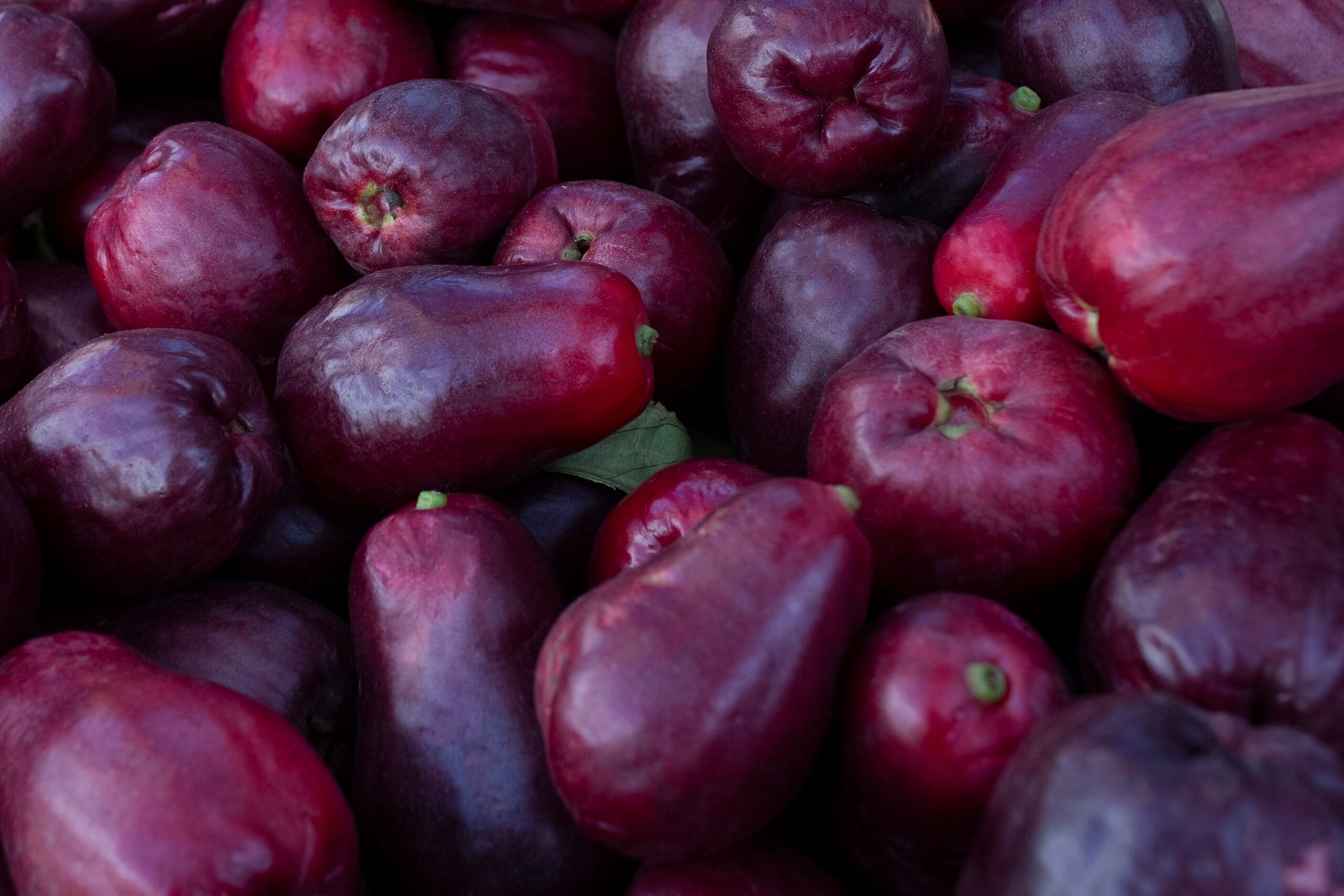Jamaican Apple (Otaheite): Everything You Need to Know
The Jamaican apple, also known as Otaheite apple, is a bright red, bell-shaped fruit that thrives in Jamaica’s tropical climate.
Unlike the common apples found in North America and Europe, this fruit is soft, juicy, and mildly sweet with a slightly tangy taste. It is a favorite among locals, especially on hot days, because of its high water content and refreshing flavor.
The name Otaheite apple comes from Tahiti (formerly known as Otaheite), the island from which the fruit was believed to have been introduced to the Caribbean. Though it’s called an “apple,” it is not related to the traditional apple but is instead a member of the Myrtaceae family, which also includes guava and rose apple.
In Jamaica, the Otaheite apple is often linked to childhood memories and togetherness. Many Jamaicans have fond memories of climbing trees to pick the ripest apples or enjoying the fruit straight from the market.
The History of Otaheite Apple in Jamaica
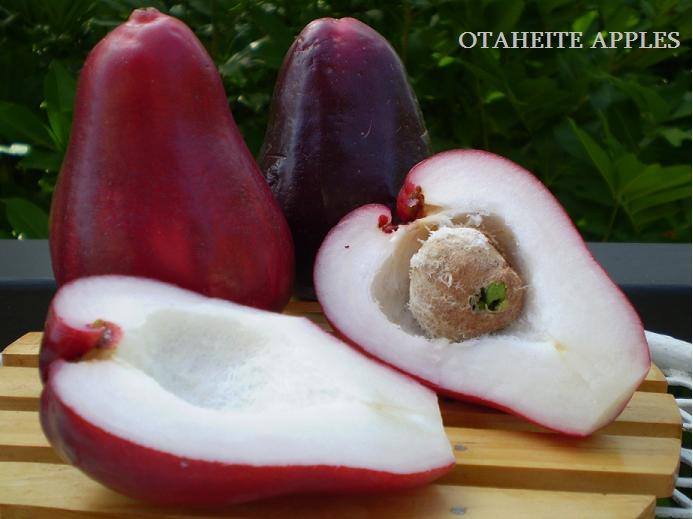
The Jamaican apple (Otaheite apple) is not originally from Jamaica. It comes from Southeast Asia and the Pacific Islands, where it grows naturally in tropical forests. The fruit is known by many names worldwide, including Malay apple, Rose apple, and Mountain apple.
The Otaheite apple made its way to the Caribbean during the era of European exploration and colonization. It was likely introduced by the French or the British in the 18th century. Historians believe the fruit was brought from Tahiti (formerly called Otaheite) to the West Indies, which is how it got its name. Since Jamaica’s warm, humid climate was perfect for the tree, it quickly adapted and became a common sight across the island.
Over time, the fruit became a beloved part of Jamaican life, growing in backyards, rural farms, and even by the roadside. While many associate it only with Jamaica, it is also found in other Caribbean islands and parts of Central and South America. However, Jamaicans have made it their own, embracing it as a local favorite.
Appearance and Flavor of The Jamaican Apple
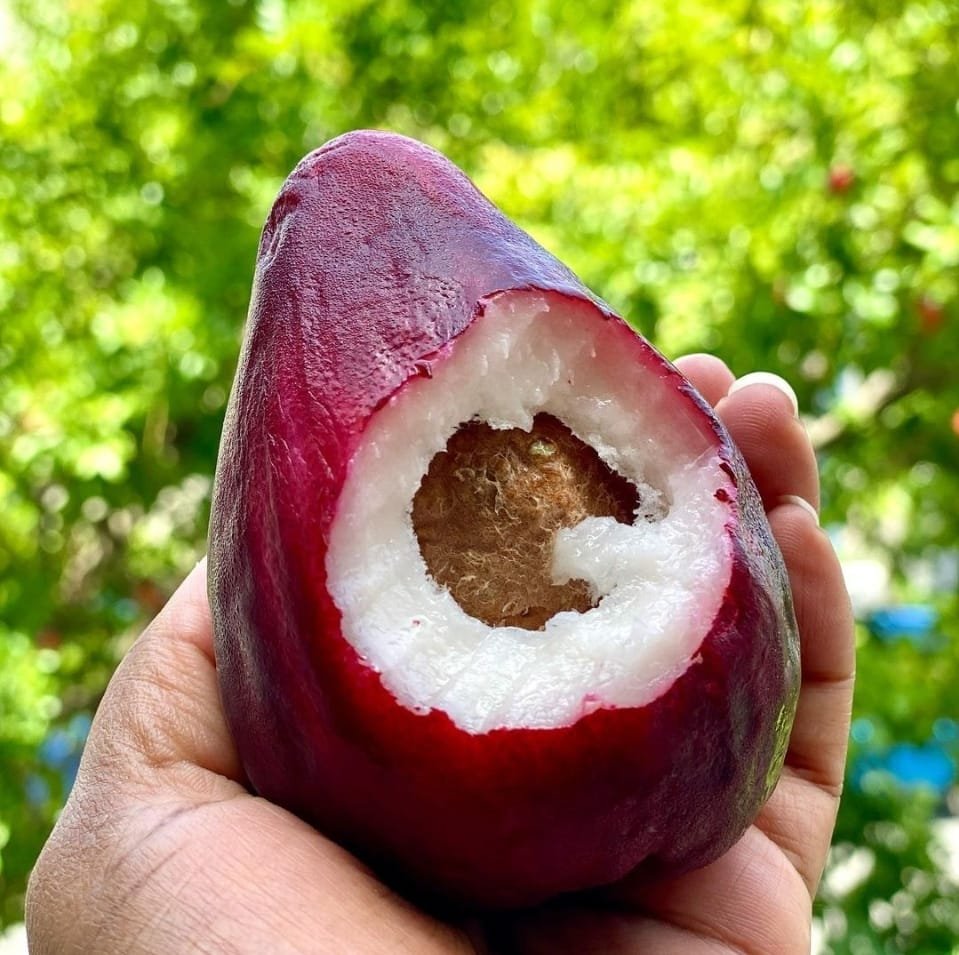
The Jamaican apple (Otaheite apple) is easy to recognize because of its distinctive shape and vibrant color. The fruit is bell-shaped, similar to a pear but with a smoother, more symmetrical form. It has shiny, thin skin that ranges from deep red to bright crimson when fully ripe. Some fruits may have lighter pink or reddish-green tones, especially when not yet mature.
The texture of the Otaheite apple is soft and slightly spongy. The flesh is white and juicy, with a delicate crispness when freshly picked. Unlike traditional apples, which have a firm and crunchy texture, the Otaheite apple is more tender, almost melting in your mouth when bitten into. Inside, there is a single, large, dark brown seed surrounded by a thin layer of fruit.
The taste of the Jamaican apple is mildly sweet with a hint of tanginess. Some compare it to a mix between a pear and a watermelon, with a subtle floral note. It is refreshing and hydrating, especially when eaten chilled on a hot day. While it is naturally sweet, it is not as sugary as mangoes or other tropical fruits, making it a light and enjoyable snack.
How and Where the Jamaican Apple Grows
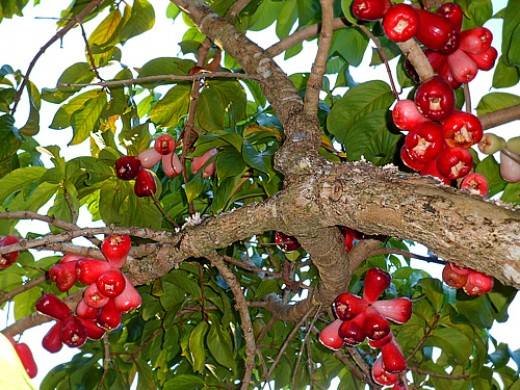
The Jamaican apple (Otaheite apple) thrives in warm, tropical climates, making Jamaica the perfect environment for its growth. It prefers well-drained soil and does best in lowland and coastal areas where there is plenty of sunshine and rainfall. While it can withstand some drought, it grows best with consistent moisture and a warm temperature throughout the year.
The Otaheite apple tree is a tall, evergreen tree that can grow up to 40 to 60 feet (12 to 18 meters) high. It has a wide, spreading canopy, providing plenty of shade, which is why it’s often found in backyards, schoolyards, and farms across Jamaica. Before the fruit appears, the Otaheite apple tree blooms with clusters of small, bright pink flowers.
In Jamaica, the fruit is commonly grown in parishes with rich, fertile soil, such as St. Elizabeth, St. Mary, Portland, and St. Thomas. However, it can be found in home gardens and small farms all over the island. Many people who have an Otaheite apple tree in their yard enjoy picking the fruit fresh when it ripens.
The fruiting season for Otaheite apple in Jamaica is typically from January to June, with peak production between March and May. However, depending on the location and weather conditions, some trees may bear fruit twice a year. When in season, the fruit is widely available in local markets, roadside stalls, and community farms.
Nutritional Value of the jamaican Apple
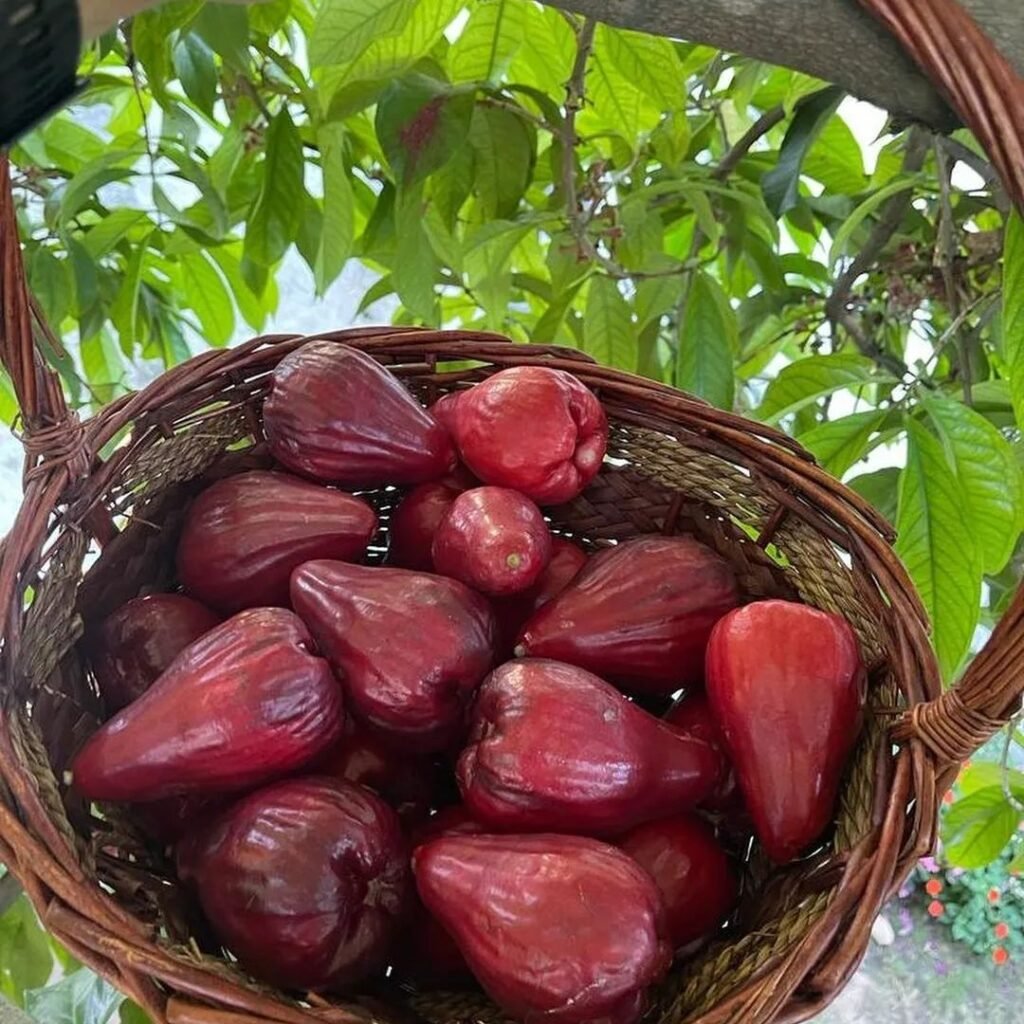
The Jamaican apple (Otaheite apple) is not just a refreshing tropical fruit—it is also packed with essential nutrients that support overall health. From boosting the immune system to keeping the body hydrated, this fruit offers several benefits:
- Otaheite apple is a good source of vitamin C, which helps to strengthen the immune system.
- This fruit has a high water content, making it hydrating and refreshing, especially in Jamaica’s warm climate.
- The fruit has a mild fiber content, which helps to support healthy digestion.
How Jamaicans Eat Otaheite Apple
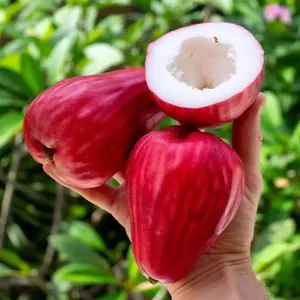
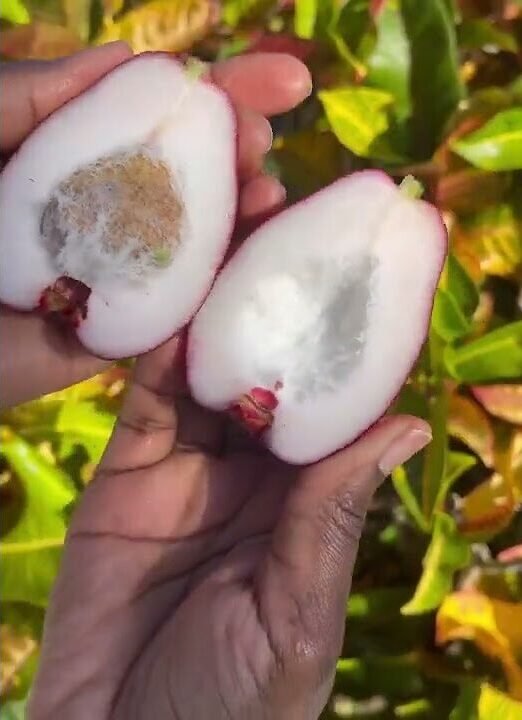
The Otaheite apple is a popular fruit in Jamaica. It can be enjoyed by:
1. Eating It Fresh
Most Jamaicans enjoy Otaheite apple straight from the tree. The fruit is washed and eaten as is, with its thin skin and soft flesh making it easy to bite into. Many people love its mild sweetness and refreshing juiciness, especially on hot days. Some even sprinkle a little salt on it to enhance the flavor.
2. Making Juice or Smoothies
Otaheite apple makes a delicious and hydrating juice. This juice is especially popular in the summer when Jamaicans look for cooling and refreshing drinks.
Check out this Jamaican Apple Juice recipe for a refreshing and delicious drink:
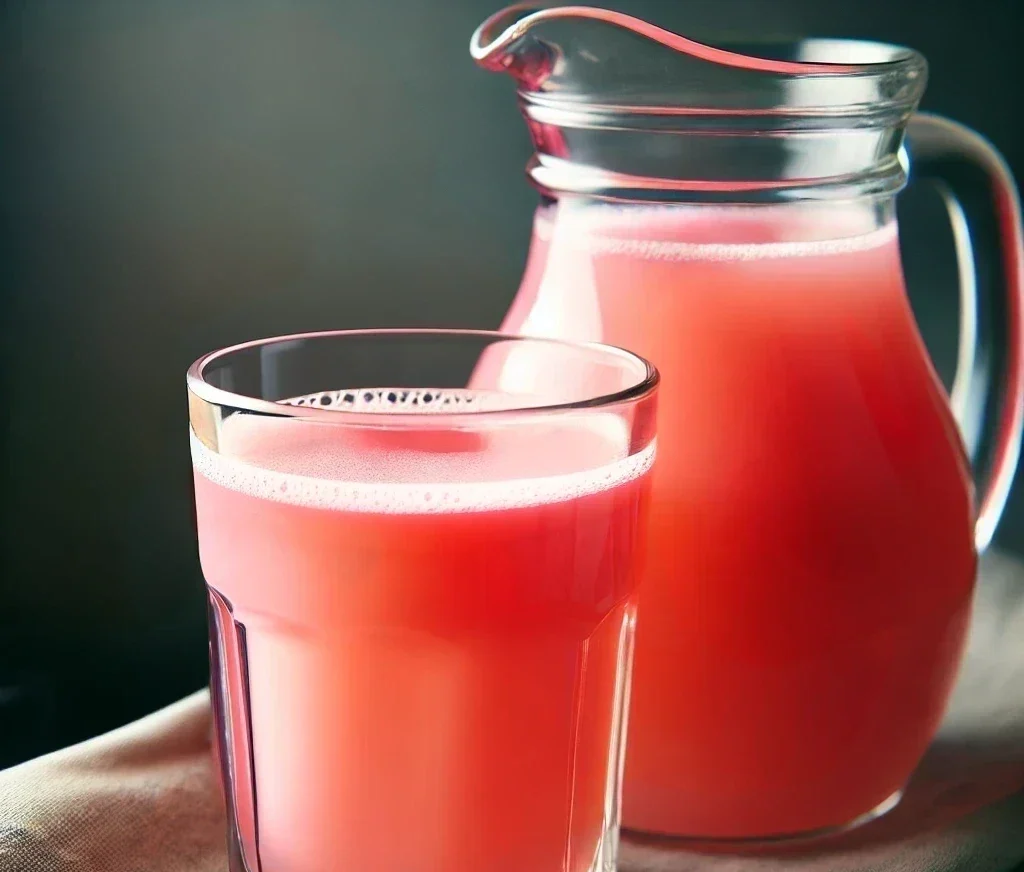
3. Using It in Fruit Salads
Jamaicans sometimes chop up Otaheite apple and mix it with other tropical fruits like mango, banana, and pineapple to make a fresh, colorful fruit salad. Because of its crisp yet juicy texture, it blends well with other fruits and adds a refreshing touch to any dish.
FAQs About Jamaican Apple (Otaheite Apple)
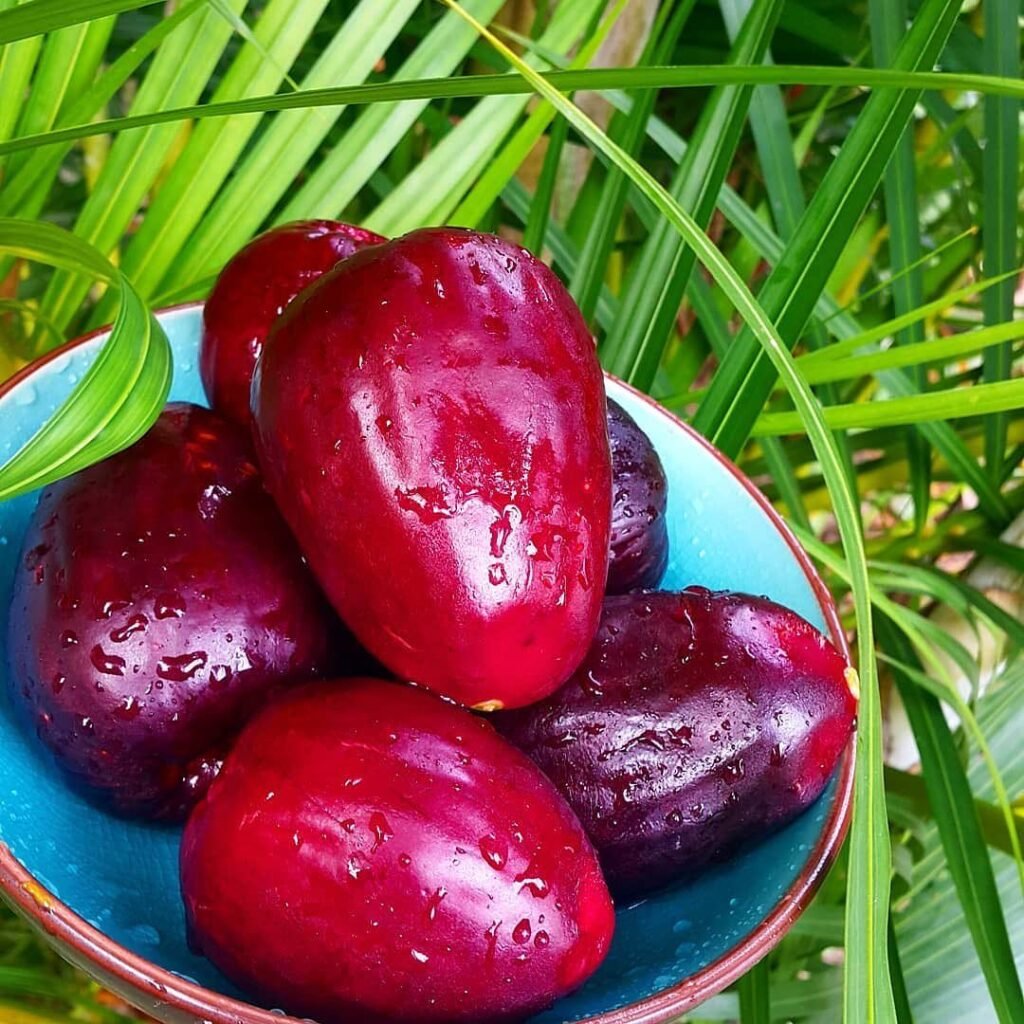
1. Is Jamaican apple the same as regular apples?
No, Jamaican apple (Otaheite apple) is different from regular apples found in North America or Europe. Jamaican apples are softer, juicier, and has a mild, slightly tangy taste. It grows in tropical climates, while regular apples grow in cooler regions.
2. What does Jamaican apple taste like?
Jamaican apple has a mildly sweet and slightly tangy flavor. It is very refreshing and has a lot of water content, making it perfect for hot days.
3. Can you eat the skin of the Jamaican apple?
Yes! The skin is thin and completely edible. You can eat the fruit as is—just wash it first.
4. Does Otaheite apple have seeds?
Yes, it has one large, dark brown seed inside. The seed is not edible.
5. When is Jamaican apple in season?
Jamaican apple is mostly in season from January to June, with peak months between March and May. Some trees may bear fruit twice a year depending on the weather.
6. How do Jamaicans eat Otaheite apple?
Jamaicans eat it fresh, blend it into juice or smoothies or add it to fruit salads. Check out this Jamaican Apple Juice recipe to make a refreshing and delicious drink!
7. What are the health benefits of Jamaican apple?
Otaheite apple is rich in vitamin C and great for hydration. It also supports digestion and the immune system.
8. Where does Jamaican apple come from?
It originally comes from Southeast Asia and the Pacific Islands. It was brought to the Caribbean from Tahiti (Otaheite), which is how it got its name.
9. Can you make juice from Otaheite apple?
Yes! The fruit is blended with water and a little sugar or honey to make a refreshing drink. Some people add lime juice or ginger for extra flavor. Check out this Jamaican Apple Juice recipe to make a refreshing and delicious drink!
10. What other names does Jamaican apple have?
In other countries, it is called Malay apple, Mountain apple, Rose apple, or Pomarrosa.
11. Where can I buy Jamaican apple?
In Jamaica, it is sold at local markets, roadside stalls, and sometimes supermarkets during its season. Outside of Jamaica, you may find it in Caribbean grocery stores or international farmers’ markets in tropical regions.
Jamaican Apple: Wrapping Up
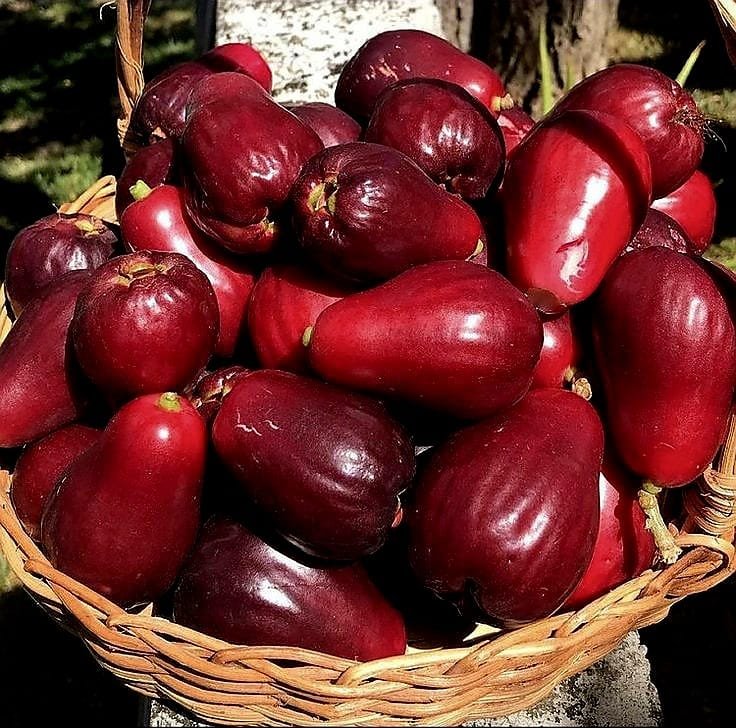
The Jamaican apple (Otaheite apple) is a delicious and refreshing fruit that Jamaicans love.
It is juicy, slightly sweet, and full of vitamin C, making it a great choice for a healthy snack. People enjoy it fresh, in juices, or in fruit salads.
If you ever get the chance to try Otaheite apple, wash it and eat it fresh, or blend it into a cool, refreshing juice. It’s a simple, tasty fruit that’s perfect for hot days!

